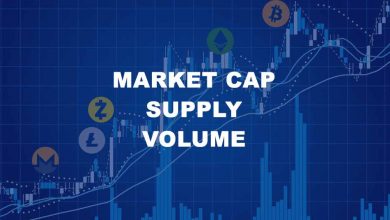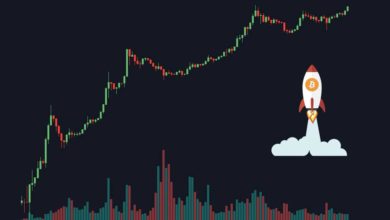What are Maker and Taker fees? – Cryptocurrency trading fees explained
When you are transferring coins from your wallet to your exchange account you pay some fees (Deposit fees). Similarly when you are withdrawing coins from your exchange wallet to your personal wallet you pay some fees (Withdrawal fees). These are nothing but network fees which you often pay to the cryptocurrency miners and not the exchange. But there is something called trading fees which you pay to the exchange for each and every successful trades. While this trading fees differs; most of the popular cryptocurrency exchanges adopts a common system called maker / taker model.
Have you not noticed this on Binance, Bybit and some other exchanges where they have maker and taker fees structured like this; charging different fees for makers and takers?

Cryptocurrency exchanges that uses maker / taker fee model often charges little to no fees for the maker orders (limit orders) and a slight higher fee for taker orders (market orders). It is very important that you understand this because when you place a trade order on an exchange you fall in to one of the two categories: either you’ll be a maker or a taker. So what are maker and taker fees and what it means to be a maker and a taker? Also why do cryptocurrency exchange uses this model? Here we’ll explain everything in detail.
What are Maker Fees and Taker Fees?
Exchanges charges maker and taker fees from the users depending on their trade type. To understand this lets first understand the two of the common trade types that is limit orders and market orders.
Limit orders (Makers): Limit orders are orders in which users attempt to buy lower than the current market price and sell higher the current market price. In other words they set maximum price for your buy orders and minimum price for your sell orders. These type of orders are not executed right away. Instead the trader have to wait until an user (buyer or seller) is ready to accept their sale price.
Market orders (Takers): Market orders are orders in which users trades (buy / sell coins) at current market price. Users who uses market order are the ones who accepts your trade offers immediately. This type of trades are fast and simple where the orders get filled immediately at the best available price.
Depending on the above trade type you’ll either be charged a small fee or no fee. If you are an user who set Limit orders then you’ll be charged the maker fee. If you are an user who set market orders then you’ll be charged the taker fee. In most cryptocurrency exchanges the maker fees are usually zero or lower than the taker fees. Why is that? It’s because makers provide liquidity to the exchange whereas the takers take away liquidity from the exchange.
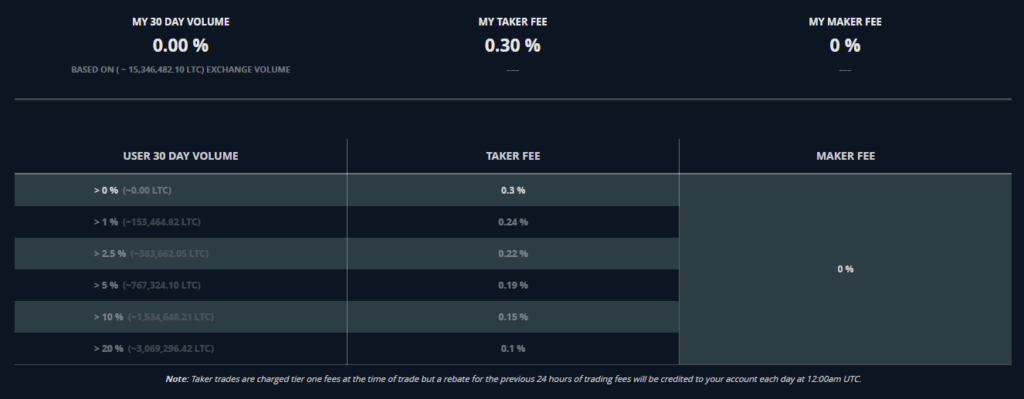
Makers vs Takers – Who are Makers and Takers?
In order to understand the concept of maker and taker you need to first understand the order book which is nothing but the list of all orders for a particular trading pair. The order book contains both buy orders and sell orders.
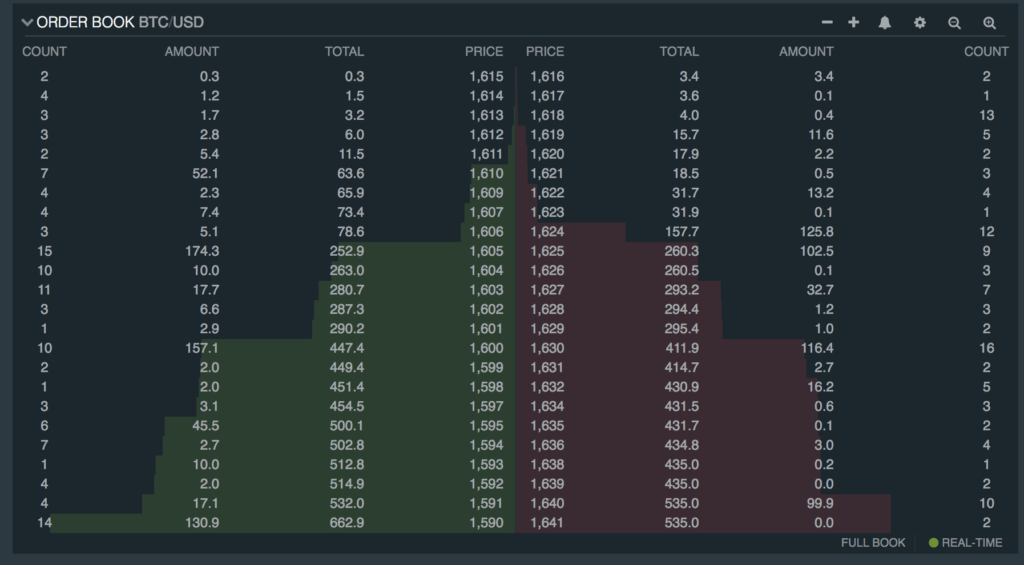
Now do not confuse it with buyers and sellers. ‘Maker’ and ‘Taker’ do not represent buyers and sellers. Maker / taker fees applies to both buy orders as well as sell orders.
Makers are users who make orders to the order book, increase the size of the order book thus increasing liquidity to the exchange. Whereas takers are users who take away orders from the order book, decrease the size of the order book thus consuming liquidity.
Market maker:
- Buy Order: if you place a buy order (limit buy) below the current selling market price then you are a maker.
- Sell Order: If you place a sell order (limit sell) above the current ticker price then you are still a maker.
In both the above examples you are the maker. Whether it is buy or sell; you place order with a price different from the current market price hence your order enters the market order book (either partially or fully). In this case you are adding liquidity to the order book and so you’ll pay the maker fee.
Now your limit order will not be filled immediately. Orders that sits in the order book will only be executed when someone (market taker) matches it. In case if nobody is willing to accept your price then market doesn’t reach your limit price and your order will not be executed. It will sit there until it gets filled, or expires, or you cancel it.
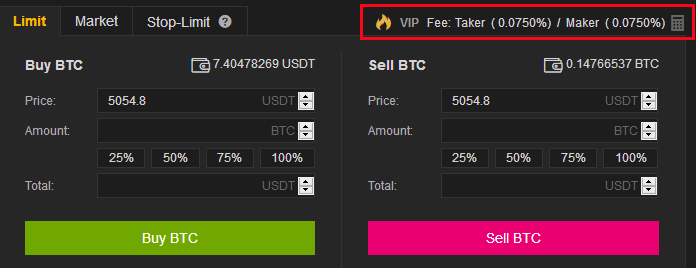
Market taker:
- Buy Order: If you place a buy order (market buy) by immediately matching with the order that is available on the order book then you are a taker.
- Sell Order: Similarly if you place a sell order (market sell) by matching the existing buy order from the order book then you are still a taker.
Takers are the one who is willing to execute their order (buy / sell) immediately at the current best market price. The orders from market takers never gets in to the order book instead they agree with the price that is already listed on the order book. Since they take away offers from the order book they are called takers and hence they pay taker fee. To become a market taker one should be willing to pay the lowest buying price to sell and highest selling price to buy.
Alright! But why taker fees are usually higher than the maker fees and how does exchange benefit from this model?
Why cryptocurrency exchanges use maker / taker model?
As we said makers help make the market by adding liquidity to the exchange whereas takers take away volume from the exchange’s order book. To understand this lets consider the following situation:
Limit buy order (Maker): Imagine you are going to buy 1 BTC from an exchange that uses maker / taker fee structure. The current market price (exchange rate) of Bitcoin is $40000. Now let’s say you are assuming that the price of Bitcoin at some point will drop to $37000 and so you set a limit buy order at $37000. Now by adding additional BTC to the exchange order book you are providing liquidity to the exchange. This will help in bringing more volume to the exchange and thus enhancing the overall trading experience for other users. In this case you’ll be paying maker fees which is usually lower than the taker fees.
Market buy order (Taker): Now let’s imagine you want to buy BTC immediately and you are okay to pay the current market price. You place a buy order at $40000. As it is the current selling price and it is already in the order book; your order gets filled immediately. Here in this example you are not adding anything to the order book. Instead removing liquidity plus the opportunity for someone else to buy BTC at that price. In this case you’ll be paying the taker fees.
Benefits of maker / taker fee model
All cryptocurrency exchanges shows interest in increasing traffic. The more the users, the more the trading will happen which in turn will generate more revenue for the exchange. The reason why exchange implement maker / taker fee model is that it helps stimulate the trading activity. Makers are not often charged since because they provide liquidity. However on the other hand takers are charged (slightly more than makers) as they take away the liquidity.
With low or 0% maker fee the exchange encourages users to place orders on the books rather than taking orders away from the book.
Okay, Buy why would someone pay the taker fees when they can pay less or no fees (maker fees) by creating limit order?
Why market order and not limit order?
When you place a market order it means you are willing to buy / sell coins as quickly as possible. Exchanges wish to charge a premium from those who are willing to trade quickly. Now the question is why does somebody pay the taker fees when they can create a limit order with slight difference than the market price which gets filled anyway?
Now let us consider another example. Bitcoin is currently being traded at $50000 and an user is willing to take profit by placing a limit buy order at $49900. As you can see the difference amount from the current trading price and the users order is only few dollars. If this order is successful then it is called take profit order. However there is no guarantee that this limit buy order will get filled. Now imagine what happens if the price of Bitcoin gradually raises to $60000 or even more than that. The users buy order will be sitting at $49900 and they have to wait until the price drops.
Users normally place market orders in order to avoid the risk of completely missing the entry. They are fine paying a slightly higher trading fee to protect themselves from sudden loss.
Difference between maker and taker
 |
 |
|---|---|
| Attempts to buy lower than the current best offer. | Execute trades at prices equal to or higher than the current best offer. |
| Attempts to sell higher than the current best offer. | Sells at prices equal to or lower than the current best offer. |
| Makers are traders who play the long game. | Takers are users who execute trades immediately. |
| Maker orders often rests in the order book until it is executed. | Taker orders are executed immediately from the order book. |
| Makers favors the exchange by adding liquidity. | Takers avoid stop loss by paying a slight trading fee. |
Now what are you? Are you a maker or a taker?


